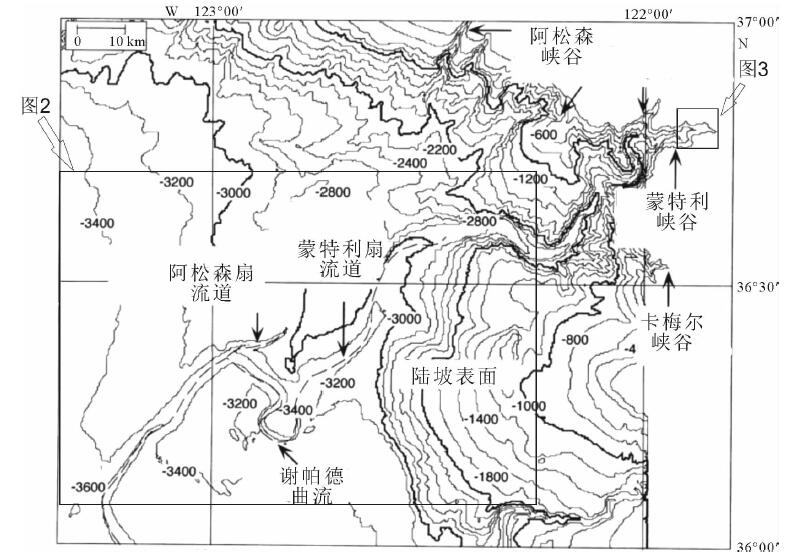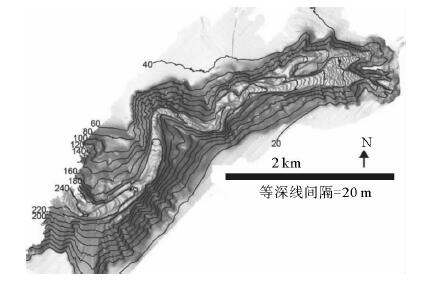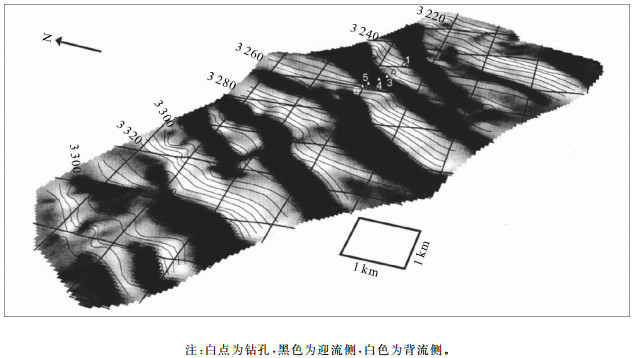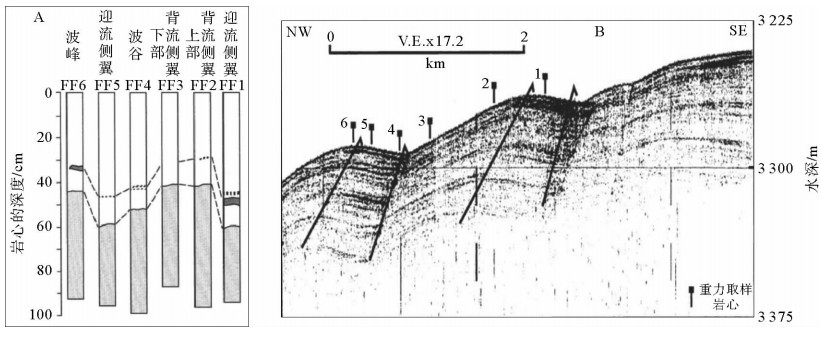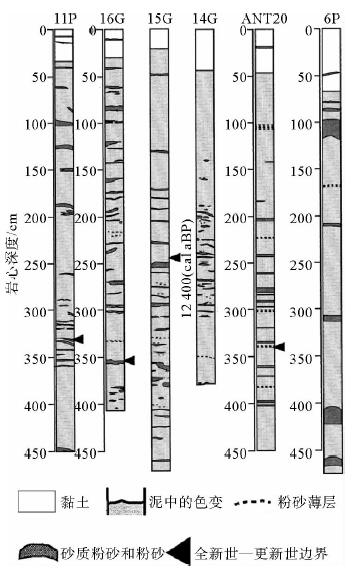| [1] |
Normark W R, Carlson P R. Giant submarine canyons: Is size any clue to their importance in the rock record?[C]//Special Papers-Geological Society of America, 2003: 175-190.
Google Scholar
|
| [2] |
钟广法, 李前裕, 郝沪军, 等.深水沉积物波及其在南海研究之现状[J].地球科学进展, 2007, 22(9):907-913. doi: 10.3321/j.issn:1001-8166.2007.09.004
CrossRef Google Scholar
|
| [3] |
Normark W R, Hess G R, Stow D A V, et al. Sediment waves on the Monterey Fan levee: a preliminary physical interpretation[J]. Marine Geology, 1980, 37(1/2):1-18.
Google Scholar
|
| [4] |
Greene H G, Hicks K R. Ascension-Monterey canyon system: history and development[M]. Bakersfield: Pacific Section of AAPG, 1990:229-250.
Google Scholar
|
| [5] |
McGann M. Paleoenvironmental analysis of latest Quaternary levee deposits of Monterey fan, central California continental margin: Foraminifers and pollen, core S3-15G[R]. Menlo Park:US Geological Survey, 1990.
Google Scholar
|
| [6] |
Mchugh C M G, Ryan W B F. Sedimentary features associated with channel overbank flow: examples from the Monterey Fan[J]. Marine Geology, 2000, 163(1/4):199-215.
Google Scholar
|
| [7] |
Greene H G, Maher N M, Paull C K. Physiography of the Monterey Bay National Marine Sanctuary and implications about continental margin development[J]. Marine Geology, 2002, 181(1):55-82.
Google Scholar
|
| [8] |
Paull C K, Mitts P, Ussler W, et al. Trail of sand in upper Monterey Canyon: offshore California[J]. Geological Society of America Bulletin, 2005, 117(9/10):1134-1145.
Google Scholar
|
| [9] |
Xu J P, Noble M A, Rosenfeld L K. In-situ measurements of velocity structure within turbidity currents[J]. Geophysical Research Letters, 2004, 31(9):L09311.
Google Scholar
|
| [10] |
Smith D P, Kvitek R, Iampietro P J, et al. Twenty-nine months of geomorphic change in upper Monterey Canyon (2002-2005)[J]. Marine Geology, 2007, 236(1):79-94.
Google Scholar
|
| [11] |
Cartigny M J B, Postma G, van den Berg J H, et al. A comparative study of sediment waves and cyclic steps based on geometries, internal structures and numerical modeling[J]. Marine Geology, 2011, 280(1):40-56.
Google Scholar
|
| [12] |
Normark W R, Piper D J W, Posamentier H, et al. Variability in form and growth of sediment waves on turbidite channel levees[J]. Marine Geology, 2002, 192(1):23-58.
Google Scholar
|
| [13] |
Smith D P, Ruiz G, Kvitek R, et al. Semiannual patterns of erosion and deposition in upper Monterey Canyon from serial multibeam bathymetry[J]. Geological Society of America Bulletin, 2005, 117(9/10):1123-1133.
Google Scholar
|
| [14] |
Lee H J, Syvitski J P M, Parker G, et al. Distinguishing sediment waves from slope failure deposits: field examples, including the "Humboldt slide", and modelling results[J]. Marine Geology, 2002, 192(1):79-104.
Google Scholar
|
| [15] |
Oiwane H, Ikehara M, Suganuma Y, et al. Sediment waves on the Conrad Rise, Southern Indian Ocean: Implications for the migration history of the Antarctic Circumpolar Current[J]. Marine Geology, 2014, 348:27-36. doi: 10.1016/j.margeo.2013.10.008
CrossRef Google Scholar
|
| [16] |
Wynn R B, Stow D A V. Classification and characterisation of deep-water sediment waves[J]. Marine Geology, 2002, 192(1): 7-22.
Google Scholar
|
| [17] |
钱宁, 万兆惠.泥沙运动动力学[M].北京:科学出版社, 2003.
Google Scholar
|
| [18] |
Allen J R L. Sedimentary structures:their character and physical basis[M]. New York:Elsevier, 1982.
Google Scholar
|
| [19] |
Rebesco M, Hernández-Molina F J, Van Rooij D, et al. Contourites and associated sediments controlled by deep-water circulation processes: state-of-the-art and future considerations[J]. Marine Geology, 2014, 352:111-154. doi: 10.1016/j.margeo.2014.03.011
CrossRef Google Scholar
|
| [20] |
Symons W O, Sumner E J, Talling P J, et al. Large-scale sediment waves and scours on the modern seafloor and their implications for the prevalence of supercritical flows[J]. Marine Geology, 2016, 371:130-148. doi: 10.1016/j.margeo.2015.11.009
CrossRef Google Scholar
|
| [21] |
Jobe Z R, Lowe D R, Uchytil S J. Two fundamentally different types of submarine canyons along the continental margin of Equatorial Guinea[J]. Marine and Petroleum Geology, 2011, 28(3):843-860. doi: 10.1016/j.marpetgeo.2010.07.012
CrossRef Google Scholar
|
| [22] |
Lonergan L, Jamin N H, Jackson C A L, et al. U-shaped slope gully systems and sediment waves on the passive margin of Gabon (West Africa)[J]. Marine Geology, 2013, 337:80-97. doi: 10.1016/j.margeo.2013.02.001
CrossRef Google Scholar
|



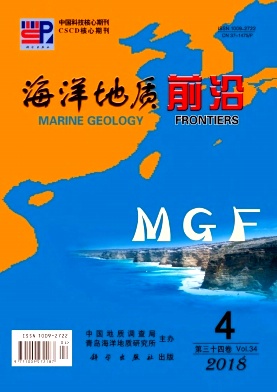

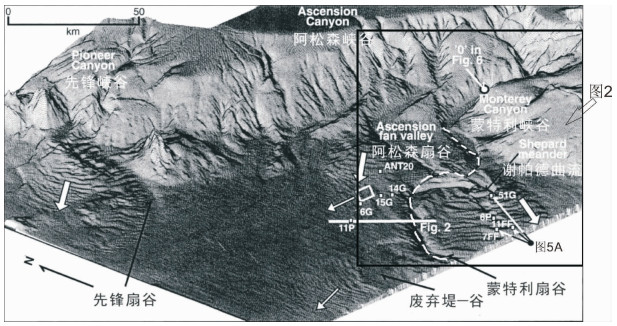

 DownLoad:
DownLoad:
